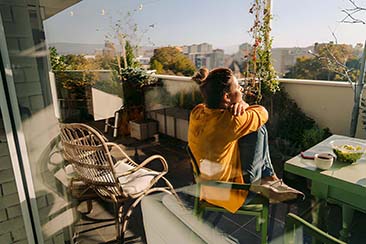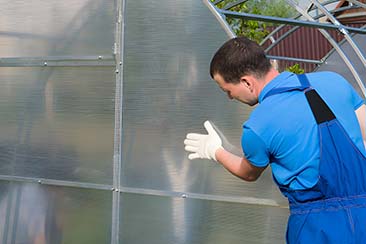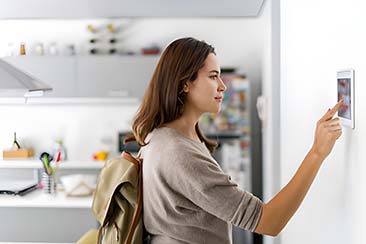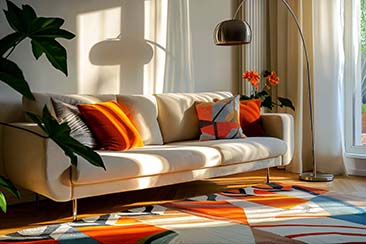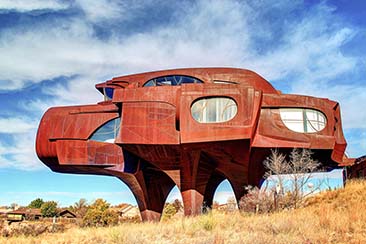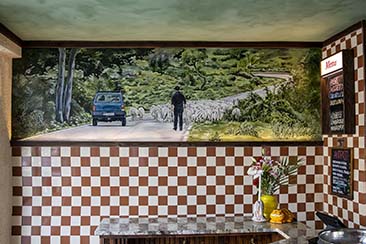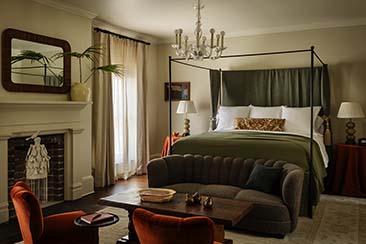The unfortunate truth is that most homes weren’t made with seniors in mind. As we begin to get older, things that we never considered to be hazards in our home can become more threatening. Something as simple as a beautiful carpet or a set of stairs could quickly become a problem in your home if you have a senior living with you.
The good news? Just because your property might not be ideally suited to seniors right now, doesn’t mean that it can’t change. Today, we’re going to explore some of the quickest and most convenient ways to make your property more secure for seniors, without compromising on style.

Embrace Smart Technologies
Modern technology offers countless tools to make life safer and more convenient for seniors. Smart home devices, for instance, can be game-changers in creating a more accessible and secure environment. Voice-activated assistants like Amazon Alexa or Google Home allow seniors to control lights, adjust the thermostat, or even call for help without needing to move across the room.
For added safety, consider installing devices like a call button in case of falls, which seniors can wear around their neck or wrist. These buttons provide immediate access to emergency assistance, offering peace of mind for both seniors and their families. Smart doorbells with video cameras can also allow seniors to see who is at the door without having to get up, reducing the risk of accidents during rushed movements.
Other innovations, like fall detection sensors, medication reminder apps, or smart monitoring systems, can ensure seniors remain safe and healthy while still maintaining their independence. By integrating these technologies, you can help create a home that adapts to their needs and enhances their quality of life.
Change the Flooring
One of the simplest ways to make a home better suited to senior life, is to change the flooring. If you have a lot of slippery laminate flooring in your home, then it might be worth switching this up with something less likely to cause slips and falls. Low pile carpet is a good choice to avoid tripping seniors as they walk. Laminate with a matt finish may also be less slippery in some cases.
If there are rugs around the home, then you may need to look into accessories that will help to keep them securely stuck to the floor underneath to avoid slips and trips. You could also think about adding more slip-resistant flooring in your bathroom and kitchen too.

Install a Lift or Elevator
Installing a lift in your home might not have been an option for many of us a few years ago. However, as technology has evolved, it’s becoming increasingly affordable for people from all backgrounds to invest in their own elevator. Take a look at these domestic lifts from the UK and you’ll see that a modern home instalment can be both affordable, and stylish.
Not only do these products help to reduce the risks of trips and falls when seniors are walking up and downstairs, but they can make your life a lot easier in other ways too. Just think about how much easier it will be to carry laundry around the home if you don’t have to navigate the stairs.
Update the Bathroom
Although there are various areas within the modern home that can become problematic for people as they get a little older, there are few rooms more worrisome than the bathroom. The bathroom is filled with opportunities for accidents in the form of slippery surfaces and difficult to use bath tubs. Consider updating this room with things like hand rails to keep your senior relative safe and stable. You could install motion activated lights for night time trips to the toilet.
Another option could be to consider replacing a bath with a walk-in shower that has its own bench where your senior loved one can rest as they wash. If you want to maintain your tub in the bathroom, then you could consider getting a seat that will automatically lower your elderly loved one into the tub and help them get back out again when they’re done washing. Making the home safer for seniors doesn’t have to be as complicated as it seems.

Improve Lighting Throughout the Home
As we age, our vision naturally declines, making proper lighting an essential part of creating a safe and welcoming environment for seniors. Many homes are poorly lit, with shadows and dim corners that can make navigation challenging, especially at night. To address this, consider installing brighter, energy-efficient LED lights throughout your home. Focus on areas like hallways, staircases, and entryways where adequate lighting is critical.
Motion-activated lights are a fantastic addition for spaces like the bathroom or kitchen, where seniors may venture during the night. Additionally, table lamps or floor lamps with easy-to-reach switches can provide localized lighting without requiring seniors to navigate dark areas. Don’t forget outdoor spaces too—well-lit driveways, pathways, and porches can reduce the risk of falls outside the home.
Rearrange and Declutter
Sometimes, the simplest changes can make a significant difference. Rearranging furniture and decluttering can drastically improve safety and ease of movement for seniors in your home. Tight spaces, sharp furniture edges, and misplaced items can pose tripping hazards or make it difficult for someone using a walker or cane to move freely.
Start by ensuring walkways and frequently used areas, such as living rooms and kitchens, are clear of obstacles. Replace heavy, cumbersome furniture with lighter options that are easier to navigate around. Anchor furniture, like bookshelves and cabinets, to the walls to prevent accidental tipping.
For added safety, organize frequently used items, such as kitchenware or toiletries, within easy reach to reduce the need for seniors to bend, stretch, or climb. These small changes can help seniors feel more comfortable and independent in their environment.

